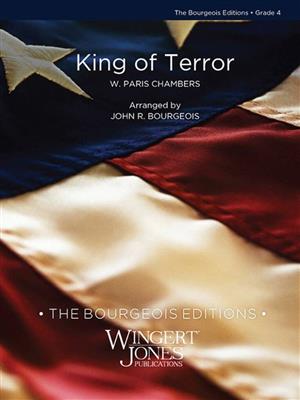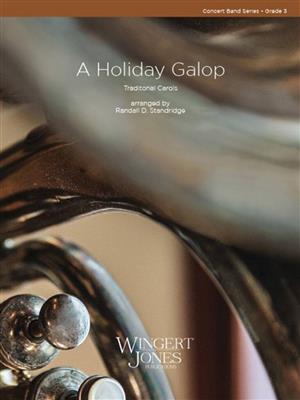Results
-
 £113.30
£113.30Via Della Terra - Marco Somadossi
Composing music also involves being able to imagine the sound of something that has no sound of its own. "Via della Terra" is a soundtrack without a film, a story without a narrator; "Via della Terra" is a street in a town, but not just any street, because if a street could tell its story, "Via della Terra" would not know where to start or where and indeed if it should finish. Like all "Vie della Terra", this street in this piece is full of sounds, none of which, however, have ever belonged to it for more than a fleeting moment, just long enough to be reflected here and there and then up and away from the earth, to be lost in the air. The steps of Mozart as a child as he whistled a piece of music, never again to be remembered or written; the philosophical thoughts, or mere everyday cares, uttered to a friend by Rosmini (whispered? or declaimed?); the excited or humorous comments of people who saw Depero's futuristic works for the first time; the voices of marketstall owners, rendered louder and more acute by the noisy crowd of women sorting through the stalls of rustling and colourful silk (so many desires; silent pauses between one item of gossip and the next); the absolute and devastating roar of cannons that violated every corner of the town, injuring bodies and mutilating the memories of its inhabitants... followed by a seeming eternity, as the citizens held their breath, waiting... "Via della Terra" is the old imperial road along which the town of Rovereto was built and has developed. "Via della Terra" is music for an imaginary, impossible and simultaneous representation of all its stories. The composer has always lived in this town, which he dearly loves, and on innumerable occasions he has imagined the voices, smells, people and the lives that have been such a part of it. With his composition, "Via della Terra", Marco Somadossi won second prize (no first prize was awarded) at the XXI Corciano International Competition for original band music in the grade 4 category.
Estimated dispatch 7-14 working days
-
 £113.30
£113.30Moderate Dances - Angelo Sormani
This piece is a tribute to dance music, especially passionate, intense and meditative dance music. "Moderate Dances" is divided into three movements: a "Tango", a "Slow Waltz" and a "Bossa Nova". Each movement and each dance has its own particular characteristics but, when combined, these different rhythmic beats and times give the piece a feeling of completeness and uniformity. The Tango started to flourish in the suburbs of Buenos Aires in around 1880. There is still some doubt as to its origins, which may be Cuban (Habanera) but are probably African. It was most popular in Argentina and Brazil: here the male protagonist was originally the "gaucho" with his inseparable guitar, later to be replaced by the proud, elegant "compadre". By around 1910 the Tango had spread to Italy and France. New clubs opened, where the upper classes could watch and dance the Tango. Here the dance also underwent some rapid transformations. The exaggerated and extravagant gestures and body movements disappeared. Slow, gliding steps replaced the old rotational movements. The women's red ankle-boots and the partners "staring into each other's eyes" accentuated the erotic nature and sensuality of this dance. So much so that, in 1913, the German government banned soldiers from dancing the Tango. Those who broke the law were immediately discharged from the army. From a strictly musical perspective, the basic instruments were a flute, a harp (the diatonic harp typically played by the Indians of Paraguay) and a violin, or flute, guitar and violin or even clarinet, guitar and violin. These instruments were easy to transport, ideal for playing at parties, in the streets and in courtyards. The musicians played by ear, frequently improvising: there were no scores, no records, which is the main reason why it is impossible to trace the Tango back to its exact origins. However, the Tango's evolution (and growing popularity) was once again fostered by its fundamental ability to absorb "other" cultures, languages and sounds. And it was the arrival of the "bandoneon" (an accordion-like instrument that was invented in Germany and brought to Rio de la Plata by some immigrant), which replaced the flute, that marked the beginning of the Tango's huge success outside Argentina. A number of talented composers, above all the great Astor Piazzola (1921-1992), transformed the bandoneon from a simple accompanying instrument to a solo instrument that was to become the distinguishing feature of the 20th century Tango. The Slow Waltz originated from the Waltz, the typical dance of the Bavarian and Tyrolese peasants in the 1700s. It was composers like Johann Strauss, father and son, who carried the Waltz to its zenith in the 1800s, creating the sensual and melancholy yet joyful and charming dance we are all familiar with. When the Waltz first became popular in Germany, the members of respectable society were shocked at the closeness of the dancing partners, who had always previously danced apart. The main difference between the Waltz and Slow Waltz is that the latter has a slower, more expressive rhythm: the men wear tails and the women wear ball gowns decorated with beads and feathers and couples dance in graceful rotational movements. "Bossa Nova" is the title of the last movement in the piece. Jobim, the great Brazilian musician, described this musical genre as a combination of modern Jazz and Samba. Bossa Nova means "new wave". This was the name of the artistic and musical movement that evolved in Brazil in the late Fifties and was extremely popular throughout the Sixties. The songs are usually about love or social matters, drawing inspiration from the slums of Rio De Janeiro and the lives of their inhabitants. Bossa Nova, with its original compositions and the artistic talent of its musicians, also became hugely popular in the United States and Europe, and top Jazz musicians (Ella Fitzgerald, Stan Getz, Bob Cooper, Charlie Bird, Sonny Rollins, Dexter Gordon, Dizzy Gillespie) started to include Bossa in their repertoires.
Estimated dispatch 7-14 working days
-
 £71.50
£71.50Squeaky Shoe Strut - Robert E. Foster
This delightful piece for young bands provides an opportunity for young players to play in the ragtime style and introduces them to the world of jazz. Heres a great way to teach an important historic American musical style in an entertaining piece that will be fun for bands young and old!
Estimated dispatch 7-14 working days
-
 £54.99
£54.99What's On The Housetop - Robert E. Foster
Celebrate with Santa, his reindeer, elves, and boys and girls of all ages in this happy holiday celebration. Join them all for a rollicking good time as Santa arrives for another wonderful holiday. Everyone gets to play the melody in this seasonal favorite as the jolly old elf gets ready to go down the chimney and share some Christmas joy.
Estimated dispatch 7-14 working days
-
 £71.50
£71.50Angels Digging It - Gary P. Gilroy
Here is a wonderful traditional carol thats been given a fresh, modern, catchy accompaniment that will liven up holiday concerts. Like visiting an old friend in a new suit of clothes, players and audiences will enjoy this fresh new setting of the classic holiday selection.
Estimated dispatch 7-14 working days
-
 £71.50
£71.50The Ash Grove Fantasy - Barry E. Kopetz
This setting of The Ash Grove is a musical fantasy based on an old traditional Welsh folksong, which is also known as Llwyn Onn. This version of the song tells of a sailors love for Gwen of Llwyn" and has been around for several hundred years. The melodious nature of this beautiful folksong, popular with generations of listeners, continues to be a favorite subject of composers and arrangers in all mediums. Featured in the 1980 British Broadcasting Companys acclaimed mini-series, "Pride and Prejudice," this excellent setting features melodic, lyrical playing that will enhance every bands musicianship and expression.
Estimated dispatch 7-14 working days
-
 £104.50
£104.50King Of Terror - W. Paris Chambers
William Paris Chambers (November 1, 1854 - November 13, 1913) was an American composer, cornet soloist and bandmaster who wrote several cornet solos and nearly 90 marches. His most famous marches are Chicago Tribune, The Boys of the Old Brigade, Hostrausers, Northwind and Revelation. The King of Terror March was published by J.W. Pepper in 1882. Its title is thought to be inspired by a carnival or midway attraction. The march is fast and furious, with all the drama and ferocity thats reflected in its name. Although one of his earlier marches, King of Terror contains all of the characteristics of Chambers famous bravura band writing.
Estimated dispatch 7-14 working days
-
 £82.50
£82.50A Holiday Galop - Randall D. Standridge
A Holiday Galop utilizes the melodies of Jingle Bells, God Rest Ye Merry Gentlemen, Twelve Days of Christmas, and Jolly Old St. Nicholas to construct a delightful Galop thats perfect for opening or closing a holiday concert. It provides excellent opportunities to develop ensemble playing, dynamic expression, style, and percussion techniques, all wrapped up in a festive musical package.
Estimated dispatch 7-14 working days
-
 £71.50
£71.50Trouble at Santas Workshop - Porter Eidam
Santa bought a newfangled toy assembly machine, and the elves have been assigned to keep this beast running! The percussion section gets to take center stage as they portray this contraption that continually breaks down despite the frustrated elves frantic efforts to keep it going. The favorite carol Jolly Old St. Nicholas (and a slight nod to Mr. Pachelbel) acts as the musical adhesive that holds this amusing holiday adventure together. Enjoy!
Estimated dispatch 7-14 working days
-
 £104.50
£104.50The Road to Castlemaine - Barry E. Kopetz
A collection of Australian folk songs that depict the sights and sounds of the beautiful landscape with an Aussie twist and tongue-in-cheek tuneful way. The first movement includes The Wonderful Crocodile and The Old Jig-Jog, folk songs full of energy and dance-like qualities. River Fraser provides the melodic content for the second movement, a slow and impassioned lament. The third movement uses three popular tunes that range in style from joyful dancing as in an Irish reel, to a poignant and haunting flavor, to a brave and dramatic march that dies away bit by bit prior to an explosive ending of energy and good humor.
Estimated dispatch 7-14 working days
